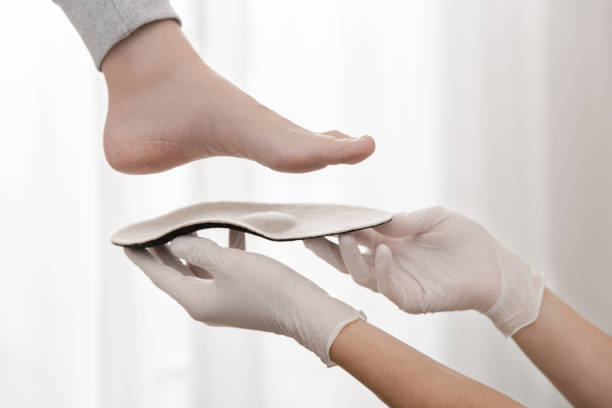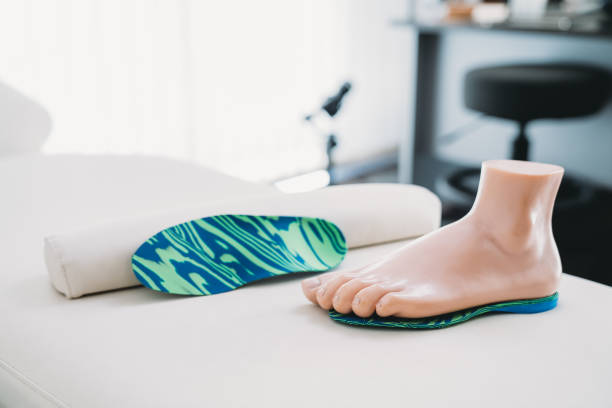Improves posture alignment, which in turn alleviates back pain. Improves foot posture, which enhances movement efficiency and reduces strain on the feet.
Distributes foot pressures more evenly, preventing painful hotspots and blisters.
Boosts confidence and athletic performance. This is due to their ability to redistribute foot and ankle pressure, reducing the risk of injury and enhancing running speeds.

Choose the Right Orthotics
Choosing the right orthotics can enhance your comfort and reduce foot and lower leg pain, enabling you to engage in physical activities without feeling any pain or discomfort. Your orthotics Pascoe Vale will help you select the best orthotics for your needs based on several factors, including your lifestyle, activity level, and specific foot conditions or issues.
The most important factor in selecting the right orthotics is determining your needs and requirements. For example, if you suffer from flat feet or excessive pronation, your podiatrist will recommend custom orthotics that are designed to correct these problems. You may also require additional support if you are overweight, as extra pressure can increase the strain on your feet.
Another consideration is the type of footwear you wear. For example, if you wear high heels, you may need to choose orthotics with more rigid support, while someone who wears sneakers will probably need soft orthotics that are flexible and cushioned
A recent study found that prefabricated orthotics Pascoe Vale inserted into running shoes improved running-related injury (RRI) rates, speed, and comfort compared to runners who did not use orthotics. The study is an important step in the development of evidence-based guidance for orthotics usage among recreational runners and adds to current knowledge about how to prevent and treat injuries and improve performance in athletes.
Consult a Podiatrist
Visiting your podiatrist is a good idea for people who suffer from foot problems or injuries. The doctor can examine your feet, check for abnormalities and provide advice on proper care of the feet and ankles. They can also prescribe custom orthotics to support your shoes and improve your foot biomechanics, which helps in preventing or alleviating certain conditions.
These inserts can help prevent or reduce a number of issues that cause pain in your feet, ankles and lower legs. Some common problems they can treat include shin splints (pain on either side of the shin bone that develops while you’re running), flat feet, high arches, or other irregularities in your foot mechanics.
A podiatrist has the education and training to assess your feet and lower legs and to diagnose conditions like a bunion, ingrown toenails, heel and arch pain, and poor circulation in the feet caused by diabetes or medical issues such as arthritis. They may recommend physical therapy or surgery, depending on the severity of the problem.
A podiatrist can also prescribe custom orthotics to address your specific needs. They make a plaster mold of the bottom of your foot and send it to a laboratory, where technicians create a device that perfectly reproduces your foot’s unique shape. This type of custom orthotic provides superior support and comfort than the premade devices you can find at shoe stores, pharmacies, and sporting goods retailers.

Wear the Right Shoes
As the foundation for your entire body, our feet deserve to be pampered and supported in comfortable shoes that are fit for the task at hand. Whether you’re an athlete looking to enhance your performance, or just want to feel more comfortable while standing for long periods of time at work, wearing the right footwear and orthotics can make all the difference.
To get started, consult a podiatrist or orthopedic specialist for recommendations tailored to your specific foot condition and lifestyle. A thorough assessment will take into account your foot shape and arch type, as well as the types of shoes you typically wear, such as sneakers or boots.
A good professional will also consider how the orthotics will fit in your preferred footwear, as they may need to be trimmed or molded for a perfect fit. And they’ll provide follow-up care to ensure the orthotics are working properly and comfortably.
Take Care of Your Orthotics
It can take time for your body to get accustomed to orthotics, but they will help you enjoy better health and less foot pain in the long run. To help them last longer, be sure to follow some simple care tips.
For example, it’s best not to wear your orthotics back-to-back days. This can cause them to become soaked with moisture. Taking them out at least once per day will allow them to air out and reduce odors. You should also avoid putting them in hot water or keeping them in the sun for prolonged periods of time, as this can damage the material.
Orthotics are custom-made and are designed to support the bones, muscles, tendons, and ligaments of your feet and ankles. They can also improve the biomechanics of your foot and lower leg movements to alleviate pain and promote better balance. They can also alleviate discomfort in the knees, hips, and lower back that can be caused by musculoskeletal abnormalities or imbalances in your foot structure.
A pedorthist can assess the condition of your feet and recommend the right orthotics to treat any pain or imbalances you may have. They can also be used in conjunction with braces or a type of taping known as kinesiology tape to reduce your foot and ankle pain even more.